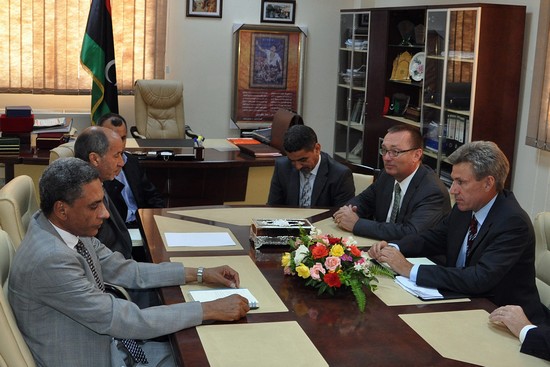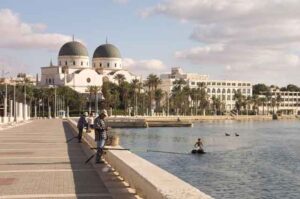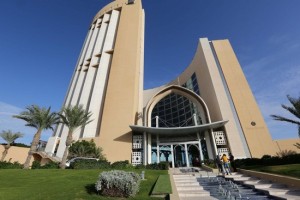From Our Lifestyle Blog
The National Transitional Council (NTC) was the de facto government of Libya for ten months between 2011 and 2012. It played a key role in the country regaining peace, following the harsh Muammar Gaddafi era, and was recognized internationally.
The uprising and civil war

The story of the NTC dates back to 2011 and one can actually turn to Tunisia and Egypt at this point. There was huge turbulence in both of these countries, with both eventually overturning their rulers. In some ways, this encouraged the Libyans to do the same – which was hardly surprising as these countries were effectively neighbors to the west and east.
As such, the uprising began in February 2011. Just weeks into the unrest and the majority of the country had slipped out of the control of the unpopular, and infamous, Muammar Gaddafi.
Over time, the opposition took even more of Libya away from Gaddafi’s grasp. One could suggest that the end of the uprising came on 20 October, with forces storming Gaddafi’s home town of Sirte and capturing it, as well as causing the death of the former leader in the process.
Formation of the NTC

However, efforts to form a new government were underway long before Gaddafi’s demise. Back on 24 February, shortly after the uprising began, meetings were held with high profile individuals in the city of Bayda. Chaired by the former justice minister Mustafa Abdul Jalil, the aim was to propose some form of interim administration.
All of the above was happening right in front of the media, with Al Jazeera TV reporting on the situation just one day after the meeting occurred. Via these mediums it was announced that Jalil would be leading the process of forming an interim body.
Just several days after that initial meeting, the NTC was officially formed. At the time, there were a few question marks surrounding the purpose of the NTC. On one hand, most people thought they were an interim organization. On the other, the spokesman Abdul Hafiz Ghoga stated that this was not the case and no contact would be made with any other foreign governments. As it turned out, these comments were false and were merely deemed to be “personal views”.
On 5 March the NTC announced that they were the sole representative of all Libya, with Jalil the chairman.
How was the NTC received abroad?

On the whole, the decision to establish a national council appeared to be received very well internationally. For example, just five days after the council’s statement that they were the sole representative of Libya, France confirmed that they were recognizing the NTC as the only legitimate government.
Admittedly, others were slightly slower to follow suite, although by September the majority had agreed on the NTC’s power. This was emphasized by the United Nations’ decision to award the country’s seat to the NTC on 20 September.
Some might suggest that the world’s decision to adopt the NTC as the only legitimate representative of Libya was incorrect. After all, this occurred without any consultation with the people of the country and the constant threat that the NTC could be infiltrated by rebels.
Some of these doubts were highlighted when the NTC requested international funds to rebuild the destruction that had occurred during the uprising. Allies opted against providing such finance, for the simple reason that many still believed that it would fall into the wrong hands. It meant that the NTC could only urge their people to respect the laws that were in place, with the organization having very few funds to enforce any radical changes.
What did the NTC aim to do?

The aims and objectives of the NTC were relatively straightforward and included:
- Ensuring that citizens of the country were safe from harm, as well as guaranteeing the safety of national territory.
- Attempting to liberate rest in Libya as matter of emergency.
- Supporting any local organizations who were attempting to restore a degree of normality for civilians.
- To become a transitional government who would eventually be able to hold free elections. This was something of a grey area at first, following initial statements, although the NTC’s role was later clarified and they confirmed that they only wished to be a transitional government. They specifically wanted to be a de jure interim government, before holding elections for a General National Congress to act as the permanent successor.
- To organize the Military Council in a bid to protect the borders of the country and its people.
- Attempt to regulate relations with other countries and represent the Libyan people in an appropriate manner.
As well as the above, the NTC confirmed that Tripoli would be the capital of the country and Arabic would be the official language. Nevertheless, it still promised to reserve the linguistic rights of any ethnic minorities which resided in the country, while the same freedom was promised for religious minorities as well.
How was the NTC structured?

Even though the NTC was the only legitimate organization that represented the people of Libya, it still only formed with 33 members. This eventually increased to 51 and although there were suspicions that membership would grow as high as 125, this never occurred.
Each one of the 33 members remained anonymous. This was for the simple reason that not all of Libya was under the control of the NTC and families of members could be under threat if they still resided in an area which was controlled by the Gaddafi forces.
The overall aim was to provide each city with five seats on the new council, with more seats being established as the opposition gained even more control of the country.
The main council members were the following individuals, who were either located in Benghazi or Tripoli:
- Mustafa Abdul Jalil – Chairman of the Council
- Mustafa Honi – Vice Chairman of the Council
- Zubeir Ahmed El-Sharif – Political Prisoners representative
- Omar El-Hariri – Military Council representative
There was also the emergence of local governments, which was particularly important considering the relative small size of the NTC. For example, in Banghazi, a local committee was formed that was comprised of fifteen members; from various backgrounds including lawyers and judges. The role of this local government was simple; to return normality to the people of Libya. It meant that they orchestrated basic day-to-day processes, such as directing traffic and collecting refuse. It allowed businesses to reopen and the public to have a greater degree of trust in the newly formed, but ultimately temporary, authorities.
Protests

However, it was not all plain sailing for the NTC. In January 2012, there were protests held in the headquarters in Benghazi. Those who were opposing the NTC were not necessarily supporters of the Gaddafi regime, but were merely dissatisfied in the manner in which the council was being run. Many of the protests focused around former Gaddafi officials who were now part of the new regime, a lack of transparency surrounding expenditures and a proposal that sharia law be adopted in any future constitution.
The brunt of the frustrations lay at the feet of Jalil, although he managed to escape out of the back of the building before protestors entered. These same protestors stole computers and furniture, while smaller demonstrations were held in Benghazi as well.
Dissolution of the NTC
It took until August 2012 before the NTC was officially dissolved. It was here where the council transferred all of their power to the General National Congress, who had been victorious in elections which had been held the previous month.
As well as being a new start for the regime in question, hundreds of people in the capital stood with candles to symbolize the reconciliation of the country. Reports from the media suggest that this was the first time that Libya had ever experienced a peaceful transition of power since the end of the monarchy.









